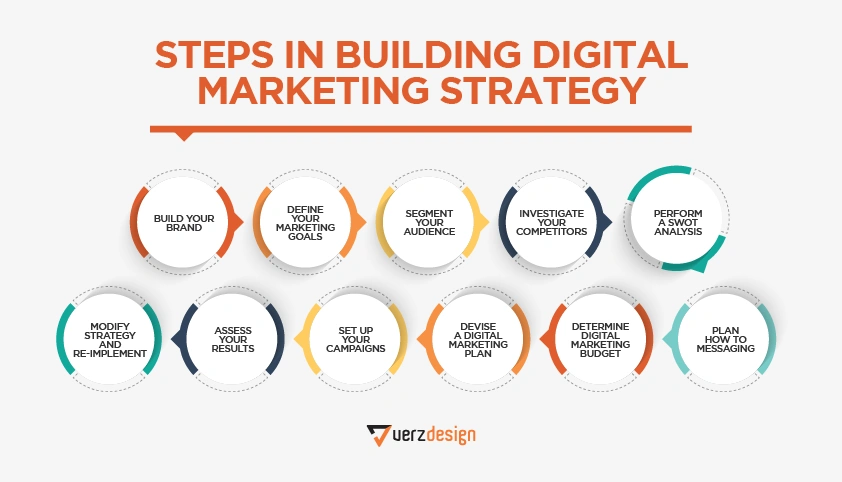Whether you’re launching a new business or looking to upgrade your online presence, having a solid digital marketing strategy is non-negotiable in 2025. With consumers spending more time online and competition at an all-time high, a structured approach helps you cut through the noise, reach the right audience, and drive measurable results. In this guide, we’ll walk you through 10 steps to build a digital marketing strategy from scratch—even if you’re starting with zero experience.
📌 Table of Contents
- Understand Your Business Goals
- Define Your Target Audience
- Conduct a Competitive Analysis
- Choose the Right Marketing Channels
- Set SMART Marketing Goals
- Develop Your Content Strategy
- Plan Your Budget & Resources
- Implement Marketing Automation Tools
- Track Performance & Analytics
- Optimize
1. 🎯 Understand Your Business Goals

Every digital marketing strategy should start with a clear understanding of your business objectives. Are you aiming to:
- Increase brand awareness?
- Generate leads?
- Boost e-commerce sales?
- Improve customer retention?
📌 Example: If your goal is to increase leads, your strategy might focus on SEO, lead magnets, and conversion-optimized landing pages.
👉 Pro Tip: Align your digital marketing KPIs with overall business goals. This ensures your efforts contribute to measurable outcomes.
2. 👤 Define Your Target Audience

Knowing your audience is the backbone of effective digital marketing.
Create detailed buyer personas by answering:
- Who are they? (age, job title, location)
- What are their pain points?
- Where do they hang out online?
- What kind of content do they consume?
🎯 Tools you can use:
- Google Analytics
- Social media insights (Facebook/Instagram Insights, LinkedIn Analytics)
- Surveys & customer feedback
3. 🔍 Conduct a Competitive Analysis
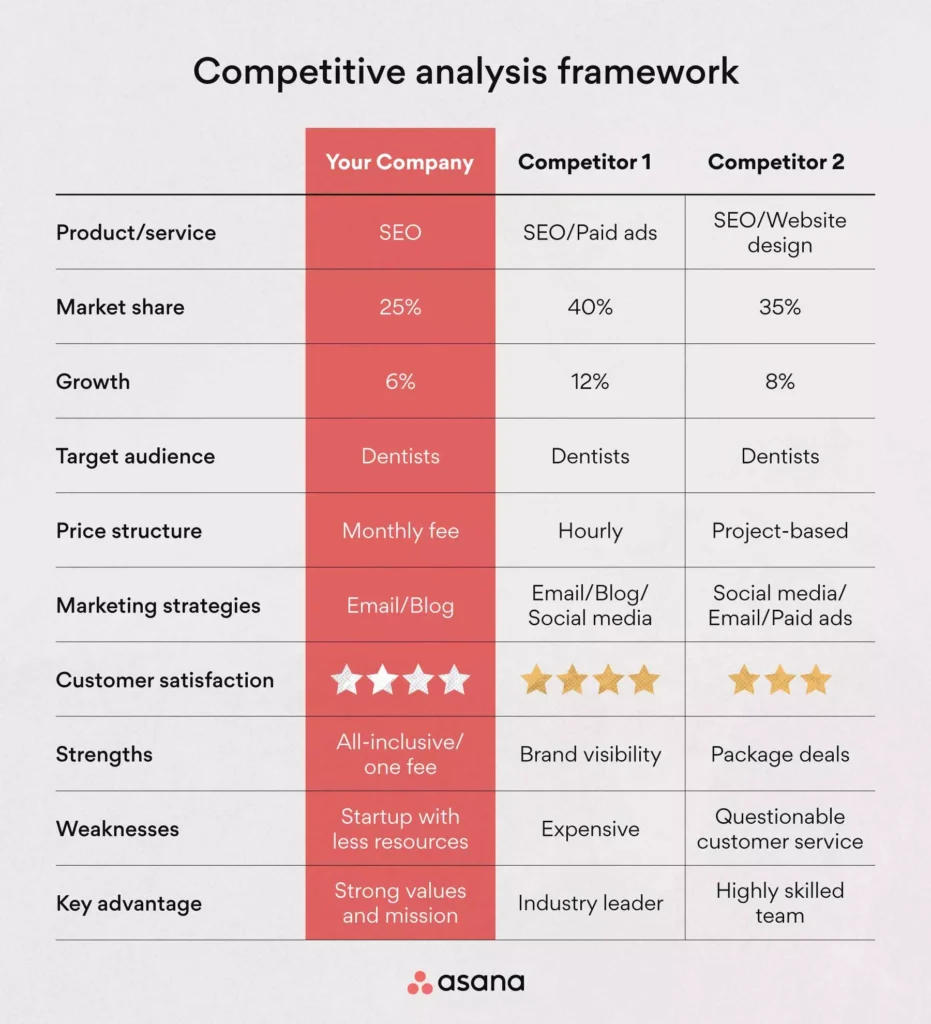
Check what your competitors are doing—and what they’re missing. Look into:
- Their website and content strategy
- SEO rankings and keywords
- Social media engagement
- Paid ads they’re running
🛠️ Tools to try:
- SEMrush or Ahrefs (for SEO/ads)
- SimilarWeb (for traffic insights)
- BuzzSumo (for content analysis)
Use this to find gaps you can exploit and benchmark your performance.
4. 📲 Choose the Right Marketing Channels
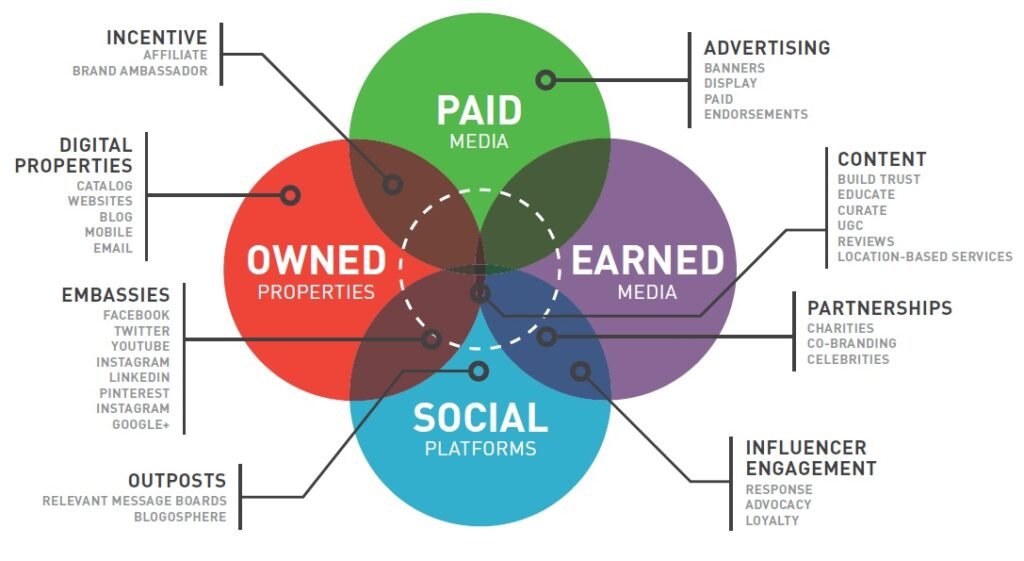
Not every channel suits every business. Choose based on your goals and audience behavior:
- SEO & Content Marketing for organic traffic and authority
- Social Media Marketing for engagement and brand visibility
- Email Marketing for nurturing leads and retention
- PPC Advertising for quick visibility and conversions
📌 Example: B2B businesses often thrive on LinkedIn and email marketing, while B2C brands may benefit more from Instagram or TikTok.
5. 🎯 Set SMART Marketing Goals
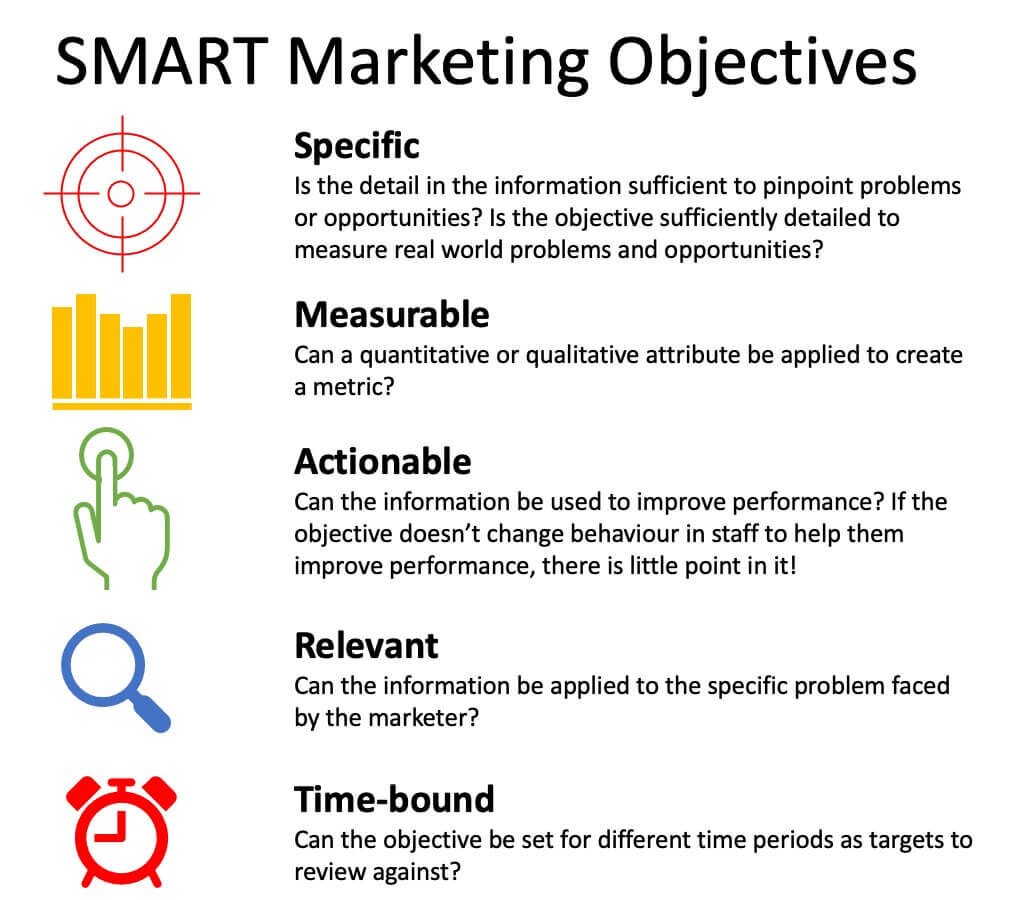
Avoid vague goals like “increase followers.” Instead, go SMART:
- Specific
- Measurable
- Achievable
- Relevant
- Time-bound
✅ Example: “Generate 500 qualified leads from SEO in 6 months.”
6. ✍️ Develop Your Content Strategy

Content fuels every aspect of digital marketing—from SEO to social media and email.
Create a content calendar that includes:
- Blog posts (SEO optimized)
- Social media updates
- Email campaigns
- Video and short-form content
- Lead magnets (eBooks, checklists, webinars)
📌 Focus on value-first content that educates, inspires, or solves problems.
7. 💰 Plan Your Budget & Resources
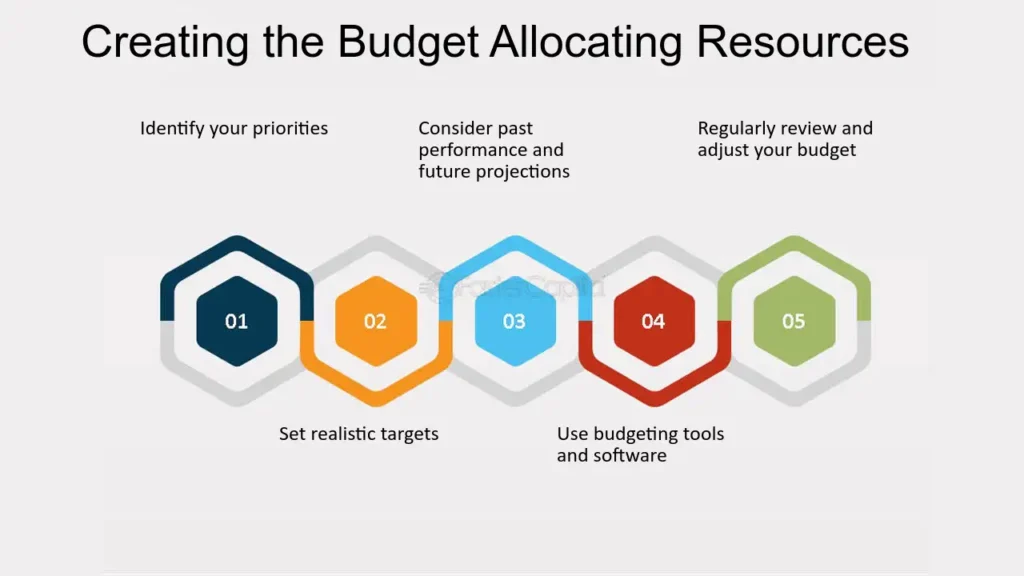
Decide how much you can realistically invest and how you’ll allocate it:
- Paid ads (Google, Meta, LinkedIn, etc.)
- Tools and software (CRM, analytics, design)
- Freelancers or in-house team
👉 Make room for testing & tweaking. Not every channel will work the same.
8. 🤖 Implement Marketing Automation Tools
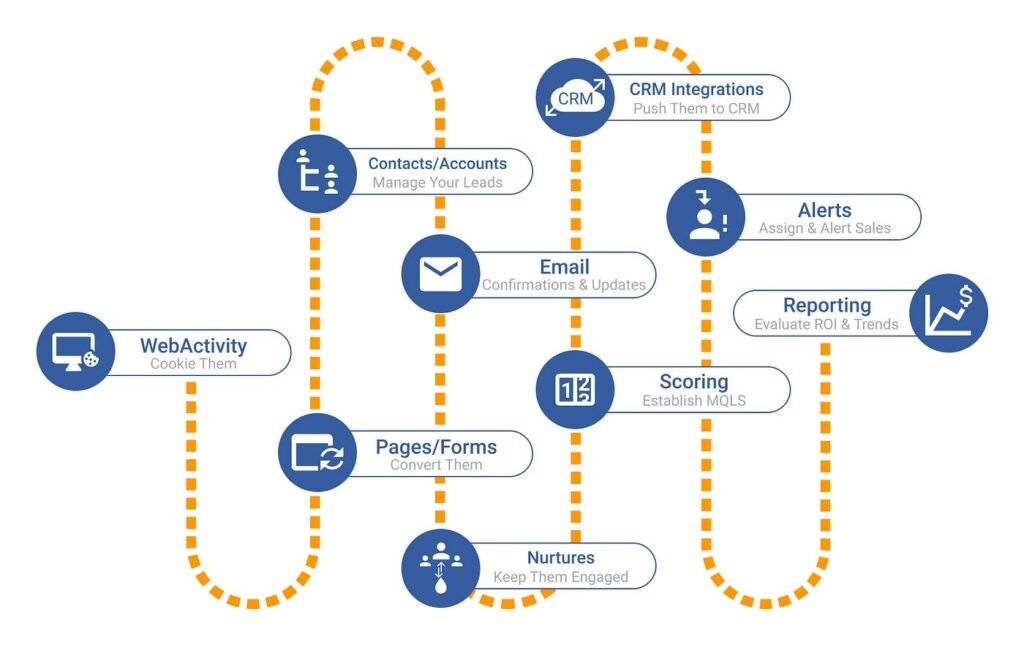
Automation saves time and ensures consistency. Consider tools like:
- HubSpot or Mailchimp (email automation)
- Hootsuite or Buffer (social media scheduling)
- Zapier (connect your apps)
🧠 Tip: Set up automated email workflows for lead nurturing and post-purchase follow-ups.
9. 📊 Track Performance & Analytics
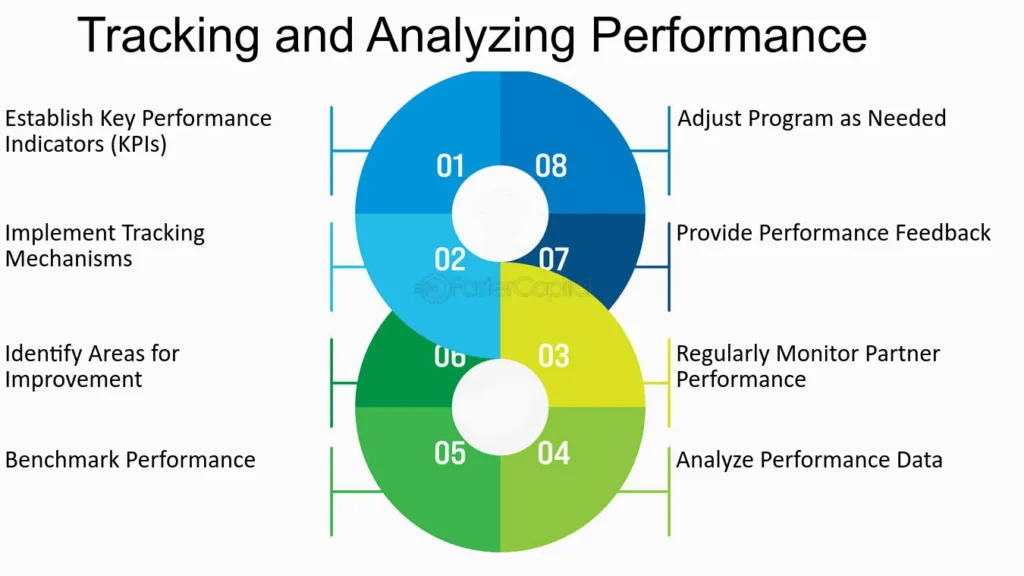
Set up key tools like:
- Google Analytics 4 (GA4)
- Google Search Console
- Meta Ads Manager (for Facebook/Instagram ads)
Monitor KPIs such as:
- Website traffic & bounce rate
- Click-through rates (CTR)
- Conversion rates
- Cost-per-lead/sale
10. 🔄 Optimize

A great digital marketing strategy is never “set and forget.”
🧪 Test headlines, CTAs, landing pages, and ad creatives. Use A/B testing where possible.
🔁 Analyze results monthly or quarterly and make data-driven adjustments.
Remember: Consistency + Optimization = Growth.
🚀 Final Thoughts
10 steps to Build a digital marketing strategy from scratch can feel overwhelming, but following these 10 steps breaks it down into manageable actions. Start small, focus on your goals, and keep testing what works.
📌 SEO Keywords Used:
https://mymarketingfriend.me/what-is-seo-and-how-many-types-of-seo-detail-guide: 10 Steps to Build Digital Marketing Strategy from Scratch- Digital marketing strategy
- How to build a digital marketing plan
- Digital marketing for beginners
- 2025 digital marketing trends
- SEO content strategy
- SMART marketing goals
Your Favourite Host Mymarketingfriend.me
